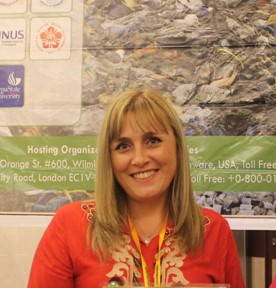4480
Scientific Program

Natela Dvalishvili
Institute of Hydrometeorology at Georgian Technical University, Georgia
Biography:
Natela Dvalishvili has completed her PhD from Iakob Gogebashvili Telavi State University and postdoctoral studies from Institute of Hydrometeorology of Georgian National Academy of Sciences of Ecology. She is the scientist of Department of Environmental Pollution Monitoring and Prognosis of Institute of Hydrometeorology of Georgian Technical University. She has published more than 30 papers in reputed journals and is the Head and expert of more projects.
Abstract
At present up to 50 sanitary and numerous small illegal dumpsites are registered in Georgia. The number and location of illegal dumpsites are mostly unknown. The rural areas of Georgia are not fully covered by waste collection services. These services are not available in many villages, and therefore the population has to dispose of waste on illegal dumpsites. Up to 52% of the waste generated in the country is arbitrarily disposed on the areas adjacent to settlements near river channels, riverbanks and even on pasturelands. 66% of the territory of Georgia is consisting of high mountainous regions inhabited by 6.5% of the country’s population. The high mountainous regions of Georgia are characterized by relatively structural weaknesses such as nondiversified economy, outmigration, extreme poverty, underdeveloped infrastructure, limited access to health care and other public services, etc. as compared to lowland and urban regions of the country. All these contribute to increasing the likelihood of emerging one of the most widespread problems in Georgia - illegal dumpsites that have to be addressed in a comprehensive manner. In this research, a mathematical formula is given which determines the likelihood of emerging illegal dumpsites. The mathematical calculations are based on regional statistical data received and processed as a result of the work carried out in 2015-2017. It is estimated that the likelihood of illegal polygons in high-altitude regions of Georgia on average 70%.
This work supported by Shota Rustaveli National Science Foundation of Georgia(SRNSFG), Project Numbe: FR-18-718
This work supported by Shota Rustaveli National Science Foundation of Georgia(SRNSFG), Project Numbe: FR-18-718
- Solid Waste Management
- Reduce Reuse and Recycle
- Plastics and Rubber Recycling
- Waste Water Treatments
- E-Wastes Recycling and Management
- Waste Treatment Technologies
- Thermal Waste Recovery
- Paper Recycling
- Food and Agricultural Waste Recycling
- Metal Recycling
- Landfilling
- Waste to Energy

